Types of Fishing Reels for Success on the Water
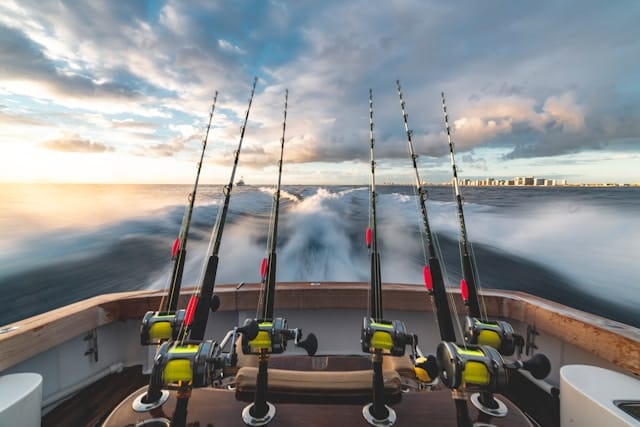
Fishing is a timeless pastime enjoyed on waterways around the world. At the heart of any successful fishing experience is the fishing reel. Along with other fishing gear - such as rods, line and recyclable fishing line - this essential piece of equipment helps anglers control their line, cast farther and reel in the catch of the day.
With the variety of fishing reels available, it can be challenging to know which one is best for your needs. There are three main categories and a couple of specialized reels. Today, we’ll explore the different types of fishing reels and their features to help you make an informed choice for your next fishing trip, whether casting into fresh or saltwater settings.
Spinning Reels

Spinning reels are among the most popular and versatile fishing reels you can add to your boat slip rental dock box. They’re easy to use and ideal for beginners and seasoned anglers alike. With a spinning reel, also known as a fixed reel spool, the line unspools off the reel as the weight of the lure or bait pulls it during casting.
This reel sits underneath the rod to provide a balanced hold. It’s operated by holding a finger on the line against the rod for either jigging or casting.
Features
- Open-face design: The spool is exposed, making it easier to monitor the line.
- Ease of use: Simple to cast, making it perfect for novice anglers.
- Versatility: Can be used for a wide variety of fishing techniques, from freshwater to saltwater and lakes to riverfront private boat dock rentals.
- Anti-reverse system: Prevents the handle from moving backward when a fish pulls on the line.
Best for
- Light to medium fishing applications.
- Targeting smaller species such as bass, trout and panfish.
- Casual fishing trips or recreational fishing.
Baitcasting Reels

The most expensive reel in the lineup, baitcasting reels are preferred by experienced anglers for their precision and power. Similar in appearance to spinning reels, these reels sit on top of the rod and have a revolving spool. This allows for greater control and accuracy when casting.
The spool revolves while the line is going out, which helps prevent tangling. When casting, the angler has to actually press the line with their thumb in order to stop it from going out further.
Features
- Control and precision: Ideal for targeting specific spots and using heavier lures.
- Braking system: Helps control the speed of the spool to avoid backlashes.
- More line capacity: Suitable for larger fish species and heavy-duty fishing.
- Durable: Usually built with strong materials to handle bigger fish and tougher conditions.
Best for:
- Targeting larger fish such as muskie, pike or saltwater species like redfish and snook
- More advanced anglers seeking control and accuracy
- Fishing in heavy cover and weeds or near structures, docks and boat lifts for rent
Spincast Reels
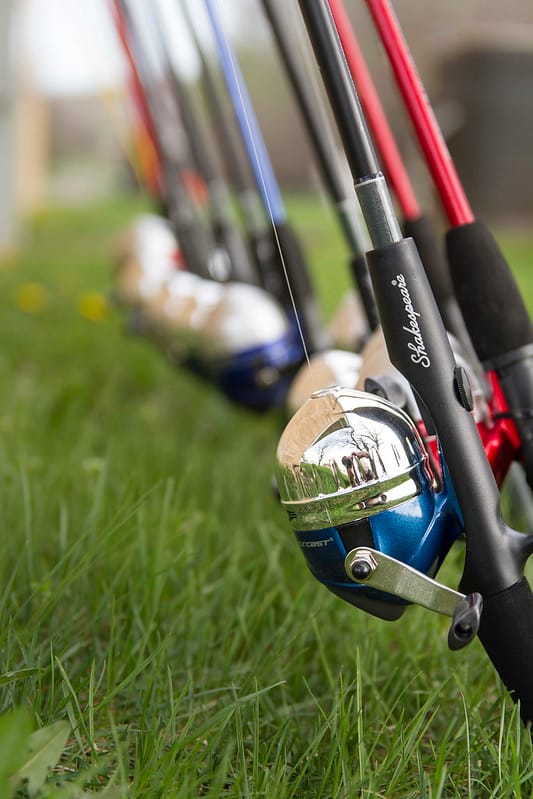
Spincast reels combine some of the features of spinning and baitcasting reels but are the simplest to operate. They have a closed face, with the line stored inside a cone-shaped cover, making them an excellent choice for children or beginners.
This is the type most often seen in a basic rod and reel setup. It’s operated by pressing a button, throwing and then releasing it.
Features
- Push-button operation: Extremely easy to cast, they’re perfect for newcomers.
- Minimal tangling: The closed design prevents tangling, which is common in open-faced reels.
- Less maintenance: Fewer moving parts means less upkeep.
- Compact size: It’s typically smaller and lighter than other reels.
Best for:
- Beginners or young anglers
- Fishing for small to medium-sized species like panfish, bluegill or perch
- Casual fishing in calm waters or at a private boat lift for rent on the lake
Fly Reels
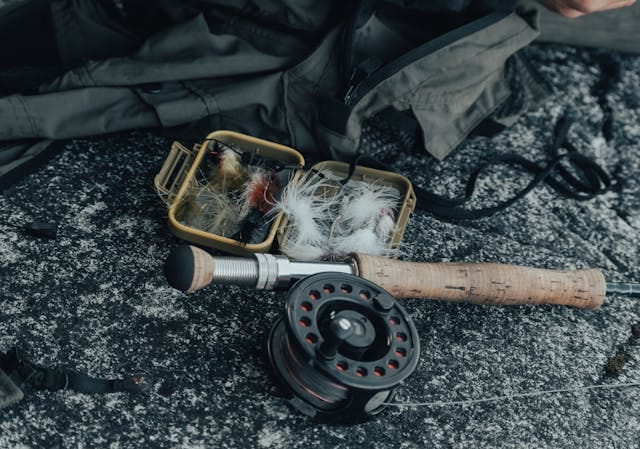
Fly fishing reels are specifically designed for fly fishing, a technique where the angler uses a lightweight lure known as a fly. Unlike other reels, fly reels have a more basic design, as much of the control is in the angler’s hands.
Features
- Manual line control: The angler manages the line manually rather than relying heavily on the reel.
- Simple drag system: Designed to control the amount of resistance a fish feels when it pulls on the line.
- Lightweight: Often made from lightweight materials such as aluminum to balance the rod and minimize fatigue.
- Direct retrieval: One turn of the handle equals one turn of the spool, offering direct line retrieval.
Best for:
- Fly fishing in rivers, lakes and streams
- Targeting trout, salmon or other species found in fly-fishing environments
- Anglers who enjoy a more hands-on and skillful fishing technique
Surf Reels
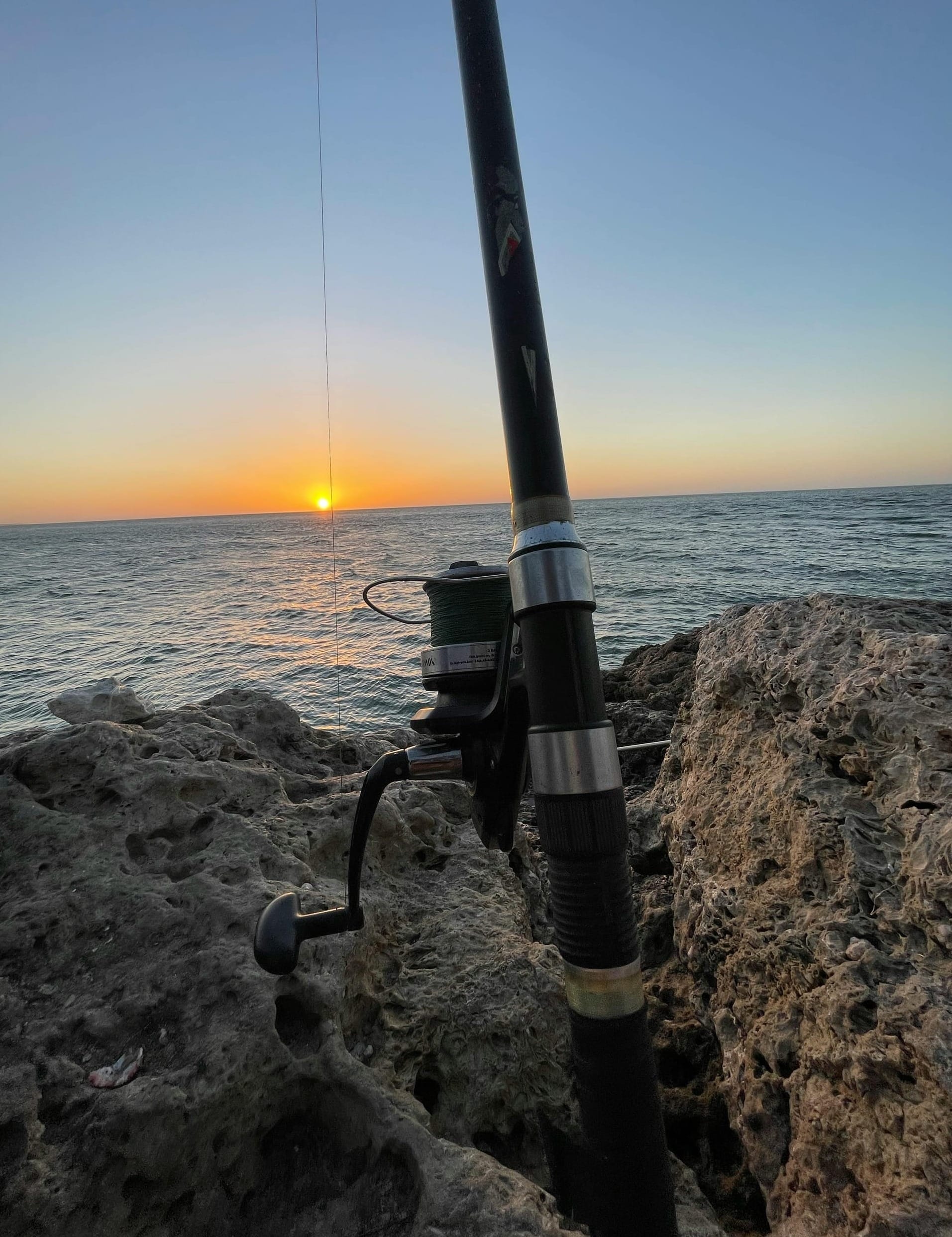
Surf reels are a subset of spinning or baitcasting reels designed specifically for surf fishing. These reels are built to cast long distances and handle the challenging conditions of beach or shore fishing.
Features
- High casting distance: Surf reels are optimized for long-distance casting, crucial when fishing from the shore.
- Durability: Typically made from corrosion-resistant materials to withstand saltwater exposure.
- Large line capacity: Allows for the use of heavier line and long runs when fighting fish.
- Strong drag system: Designed to handle the powerful runs of species like striped bass, redfish or sharks.
Best for:
- Fishing from the beach, jetties or piers.
- Targeting larger saltwater species such as striped bass, bluefish and red drum.
- Anglers who need to cast far into the surf to reach fish.
Trolling Reels
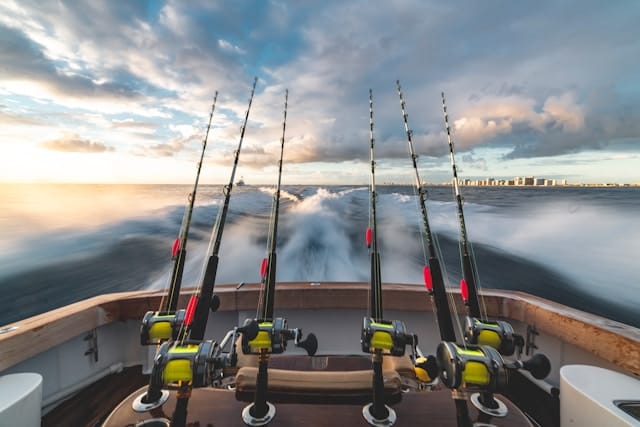
Trolling reels are specialized reels used for trolling, a technique where bait or lures are dragged behind a moving boat. These reels are built to handle large fish and are often used in deep-sea or big-water environments, sometimes in conjunction with downriggers and outriggers.
Features
- High line capacity: Can hold a large amount of heavy line for deep-water fishing.
- Powerful drag system: Designed to handle the pressure of large, hard-fighting fish.
- Level-wind system: Ensures the line is evenly distributed across the spool during retrieval.
- Two-speed models: Some trolling reels come with two-speed options, allowing for quick retrieval or more powerful cranking when fighting fish.
Best for:
- Deep-sea fishing for species like tuna, marlin or sailfish.
- Lake fishing for large freshwater species such as salmon or lake trout.
- Serious anglers looking for a durable, high-capacity reel for big game fishing
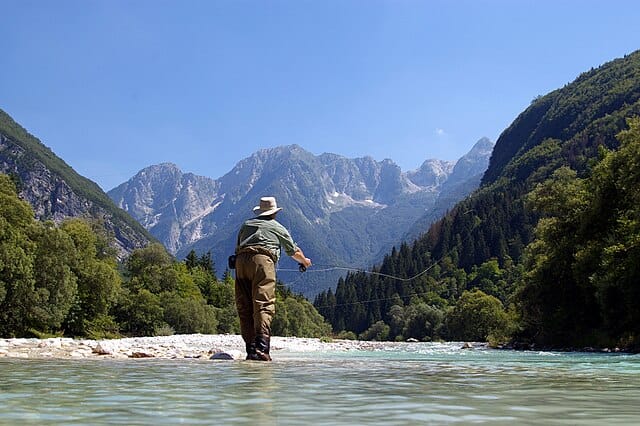
Now that you have an idea of which reel to use for a specific rod or type of fishing, you’ll be able to make an informed choice the next time you hop in the boat and head out from the marina or private boat dock rental. Let us know what you catch!



